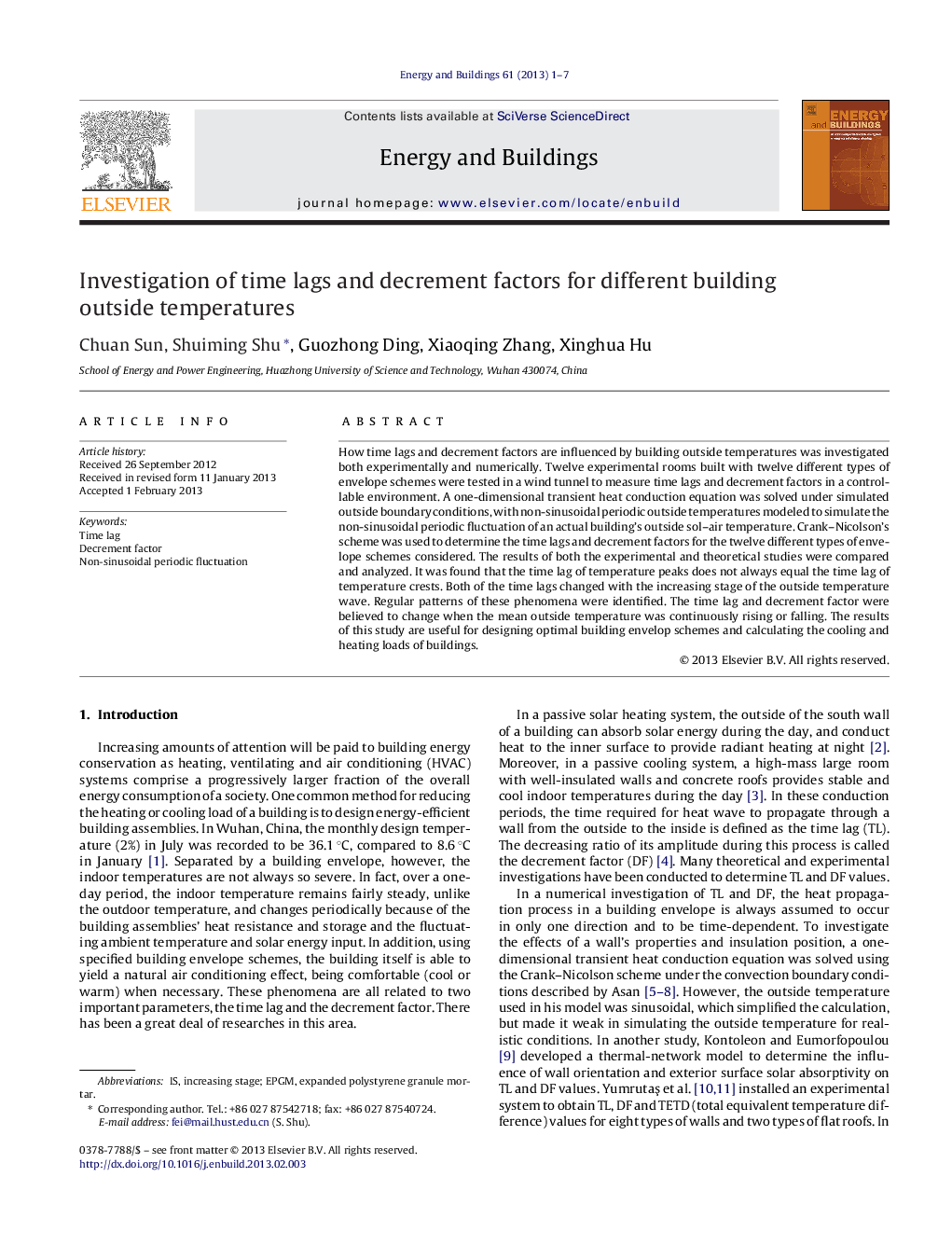| Article ID | Journal | Published Year | Pages | File Type |
|---|---|---|---|---|
| 263430 | Energy and Buildings | 2013 | 7 Pages |
How time lags and decrement factors are influenced by building outside temperatures was investigated both experimentally and numerically. Twelve experimental rooms built with twelve different types of envelope schemes were tested in a wind tunnel to measure time lags and decrement factors in a controllable environment. A one-dimensional transient heat conduction equation was solved under simulated outside boundary conditions, with non-sinusoidal periodic outside temperatures modeled to simulate the non-sinusoidal periodic fluctuation of an actual building's outside sol–air temperature. Crank–Nicolson's scheme was used to determine the time lags and decrement factors for the twelve different types of envelope schemes considered. The results of both the experimental and theoretical studies were compared and analyzed. It was found that the time lag of temperature peaks does not always equal the time lag of temperature crests. Both of the time lags changed with the increasing stage of the outside temperature wave. Regular patterns of these phenomena were identified. The time lag and decrement factor were believed to change when the mean outside temperature was continuously rising or falling. The results of this study are useful for designing optimal building envelop schemes and calculating the cooling and heating loads of buildings.
► Non-sinusoidal periodic functions are constructed to simulate outside temperature. ► Time lag of peaks does not equal to time lag of crests. ► Relation between time lag and outside temperature wave is found. ► Relation between decrement factor and outside temperature wave is found.
